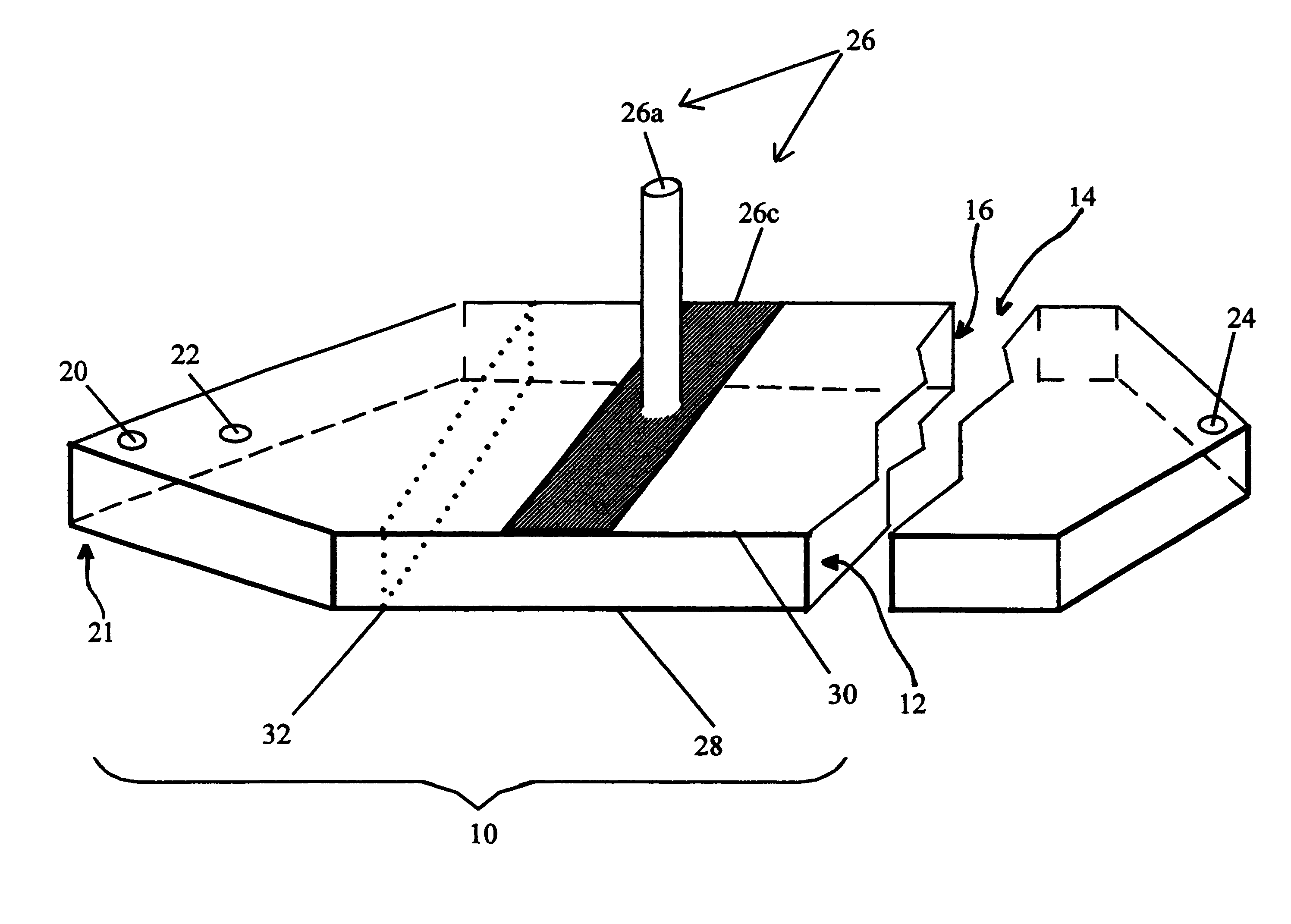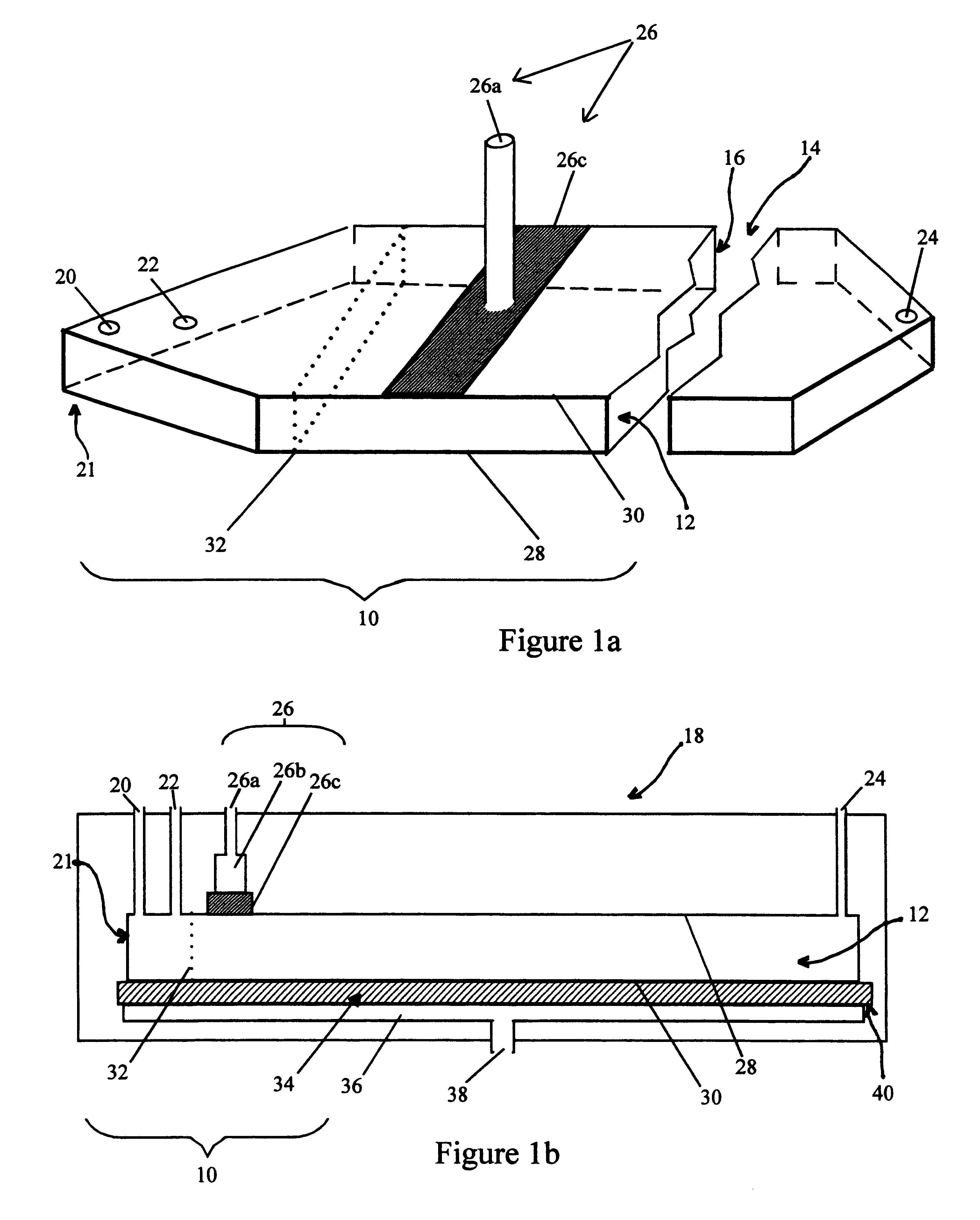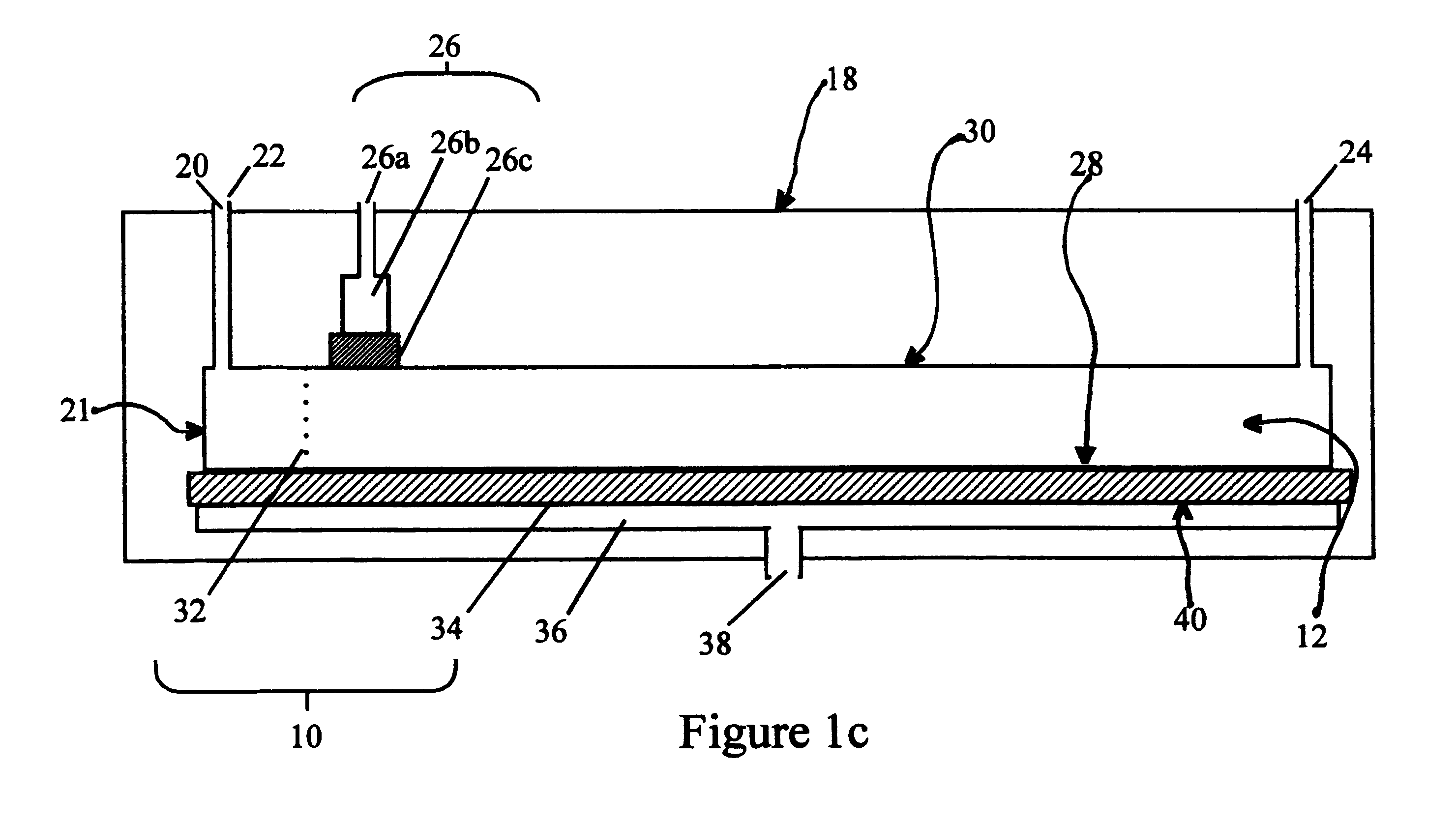Sample focusing device and method
a focusing device and sample technology, applied in the field of sample focusing devices and methods, can solve the problems of reducing the separation resolution, not the only possible application of field-flow fractionation, and affecting the separation resolution, so as to reduce the separation resolution, avoid sample spreading, and high resolution
- Summary
- Abstract
- Description
- Claims
- Application Information
AI Technical Summary
Benefits of technology
Problems solved by technology
Method used
Image
Examples
Embodiment Construction
The sample focusing device and method of this invention were tested using a refractive index detector as the detection system. This type of detector is especially sensitive to pressure transients and so its response should indicate the presence and magnitude of a pressure transient. The specific refractive index detector used, the Optilab model DSP (Wyatt Technology Corp., Santa Barbara, Calif.), uses interferometry to detect refractive index changes.
For comparison purposes, an asymmetrical flow FFF channel was set up under outlet focusing method conditions. FIGS. 5a and 5b show diagrams of this instrumental set up. The flow lines and positions of the switching valves are shown for the focusing stage according to the outlet focusing method in FIG. 5a; the valve positions and flow lines for the separation stage according to the same method are shown in FIG. 5b. The experimental conditions for the focusing stage were those given in Table 2
The flow rates during the separation phase wer...
PUM
| Property | Measurement | Unit |
|---|---|---|
| diameter | aaaaa | aaaaa |
| total volume | aaaaa | aaaaa |
| thickness | aaaaa | aaaaa |
Abstract
Description
Claims
Application Information
 Login to View More
Login to View More - R&D
- Intellectual Property
- Life Sciences
- Materials
- Tech Scout
- Unparalleled Data Quality
- Higher Quality Content
- 60% Fewer Hallucinations
Browse by: Latest US Patents, China's latest patents, Technical Efficacy Thesaurus, Application Domain, Technology Topic, Popular Technical Reports.
© 2025 PatSnap. All rights reserved.Legal|Privacy policy|Modern Slavery Act Transparency Statement|Sitemap|About US| Contact US: help@patsnap.com



